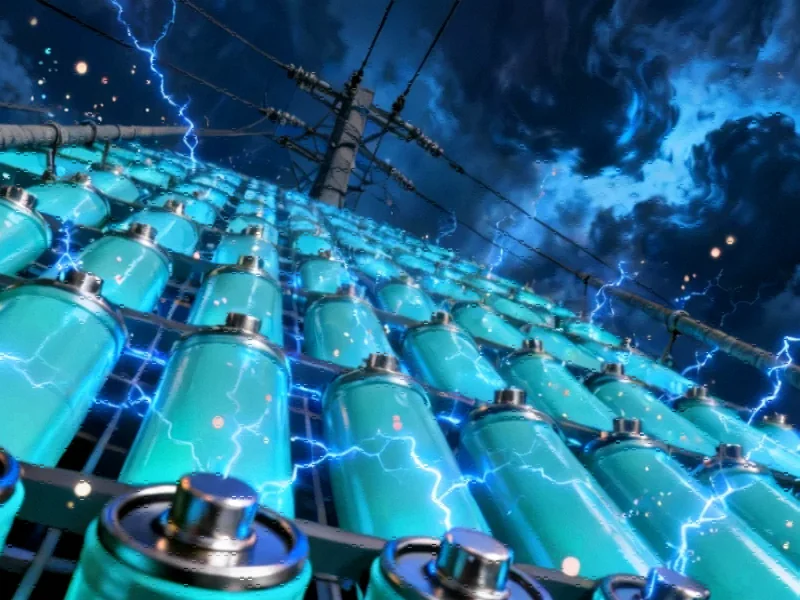The Critical Role of Battery Storage in Modern Energy Infrastructure
As the global energy landscape undergoes a profound transformation, battery energy storage systems (BESS) have emerged as indispensable components in maintaining grid reliability and facilitating the transition to renewable energy. These sophisticated systems address the fundamental challenge of intermittency that plagues solar and wind power generation, ensuring that clean energy can be reliably dispatched when needed most.
The significance of BESS extends far beyond simple energy storage—they represent a paradigm shift in how we manage, distribute, and optimize electrical power across increasingly complex grids. From residential applications to utility-scale installations, these systems are redefining energy resilience in an era of climate uncertainty and evolving market trends.
Understanding Battery Energy Storage Systems
At their core, battery energy storage systems function as massive rechargeable batteries capable of capturing excess energy during periods of low demand and releasing it during peak consumption hours. This fundamental capability makes them invaluable for balancing supply and demand in real-time, particularly as grids incorporate higher percentages of variable renewable generation.
Modern BESS installations provide multiple critical services simultaneously, including:
- Peak shaving: Reducing demand during high-usage periods
- Load shifting: Moving energy consumption to off-peak hours
- Frequency regulation: Maintaining grid stability
- Backup power: Providing emergency electricity during outages
Current Challenges and Limitations
Despite their tremendous potential, current battery storage technologies face significant hurdles that the industry is actively working to overcome. The most pressing limitation involves storage duration, with most commercial systems offering only 2-4 hours of capacity. While developers are pushing for 6-10 hour systems, the economic viability of longer-duration storage remains challenging due to high capital costs.
Transmission infrastructure presents another critical obstacle. The rapid deployment of renewable energy generation has outpaced grid upgrades in many regions, creating congestion issues that complicate BESS installation. As charging batteries adds to the existing energy load, many constrained areas cannot accommodate additional demand without costly transmission enhancements—a financial burden that often falls on developers and can derail promising projects. These infrastructure challenges highlight the importance of robust critical cloud infrastructure for managing complex energy systems.
Technological Advancements Driving Change
The future of battery storage is being shaped by innovations across multiple fronts, with long-duration storage and advanced battery chemistries leading the charge toward more capable and sustainable solutions.
Long-Duration Energy Storage Breakthroughs
Next-generation storage technologies are targeting dramatically extended durations of 12 to 100 hours, which would fundamentally transform our ability to weather prolonged periods of low renewable generation or unexpected demand surges. These advancements are particularly crucial as we move toward grids dominated by intermittent resources, where multi-day storage capabilities could mean the difference between reliability and blackouts. The development of these systems represents one of the most significant related innovations in the energy sector.
Evolution of Battery Chemistries
Beyond lithium-ion, researchers are exploring numerous alternative chemistries that offer improved safety, environmental sustainability, and performance characteristics. These include:
- Solid-state batteries with enhanced safety profiles
- Flow batteries suitable for long-duration applications
- Sodium-ion and other abundant material alternatives
- Advanced recycling technologies for end-of-life management
These chemical innovations not only address performance limitations but also create more sustainable pathways from resource extraction through disposal, aligning with broader environmental objectives. The scientific principles behind some of these advancements share surprising connections with Earth’s magnetosphere research, revealing unexpected electrical phenomena that could inform future energy storage technologies.
The Smart Grid Integration Imperative
Battery storage systems realize their full potential when integrated with smart grid technologies that enable sophisticated monitoring, control, and optimization. Through IoT connectivity, predictive analytics, and advanced automation, utilities can deploy BESS resources with unprecedented precision, responding to grid conditions in real-time and maximizing the value of stored energy.
This digital transformation extends to supply chain management as well, where companies like IMD Supply are implementing advanced tracking and optimization systems that ensure the reliable delivery of components critical to BESS deployment.
Regulatory Frameworks and Market Structures
The successful integration of battery storage into modern grids requires supportive regulatory environments that recognize the unique value these systems provide. Forward-thinking policies can accelerate adoption by:
- Creating market structures that compensate storage for multiple services
- Streamlining interconnection processes and reducing barriers
- Establishing standards for safety, performance, and recycling
- Providing investment certainty through long-term planning
As detailed in our analysis of battery storage systems transforming grid stability, the right regulatory approach can unlock tremendous value while ensuring reliability and affordability for consumers.
Conclusion: The Path Forward
Battery energy storage systems represent more than a technological innovation—they are foundational to building the resilient, flexible, and sustainable grids of the future. As advancements continue to address current limitations around duration, cost, and integration, BESS will play an increasingly central role in our energy ecosystem.
The journey toward fully realizing the potential of battery storage requires continued collaboration between technology developers, utilities, regulators, and researchers. By embracing these transformative technologies and supporting them with intelligent policies and market structures, we can accelerate the transition to a clean energy future while maintaining the reliability that modern society depends on.
This article aggregates information from publicly available sources. All trademarks and copyrights belong to their respective owners.
Note: Featured image is for illustrative purposes only and does not represent any specific product, service, or entity mentioned in this article.



